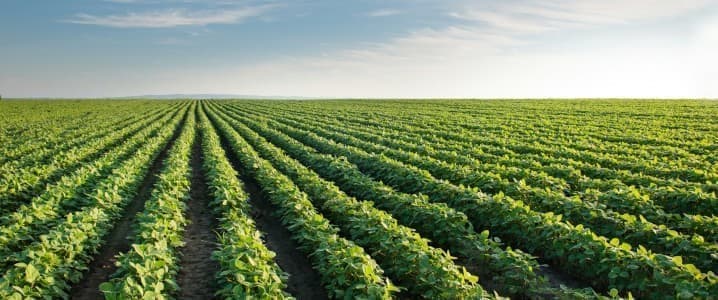Business
American Farmland Prices Surge to Record Highs Amid Demand

The value of American farmland has reached unprecedented levels, with average prices now at a record $4,350 per acre. This marks a 4.3% increase from the previous year and continues a trend of rising agricultural real estate prices, which have seen gains for five consecutive years. The surge follows a 5% increase, approximately $200, between 2023 and 2024.
As the global population expands and the demand for healthier food rises, the significance of farmland has grown. Urban sprawl and environmental degradation have contributed to a decline in arable land per capita, making farmland more than just a stable investment; it is increasingly viewed as a hedge against inflation and global instability.
Impact of Rising Farmland Values
The increase in farmland prices reflects broader economic trends. As investors seek to safeguard their assets against inflationary pressures, farmland has emerged as a tangible and finite resource. Unlike stocks or fiat currencies, farmland offers a secure investment opportunity, preserving generational wealth through its productivity.
In addition to rising land values, cash rents for cropland have also hit new highs. The average rent for cropland has increased by 0.60%, reaching $161 per acre. This rise in rental costs indicates a robust demand for agricultural land as farmers and investors alike look to capitalize on the growing need for food production.
The rising prices have not gone unnoticed in the investment community. Analysts stress the importance of farmland as a low-volatility store of value. As geopolitical tensions and economic uncertainties continue to affect global markets, farmland is increasingly seen as a reliable asset class.
Future Outlook for Agricultural Real Estate
Looking ahead, experts predict that the value of American farmland is likely to continue its upward trajectory. Factors such as climate change, population growth, and changing dietary preferences will likely intensify the demand for arable land. As the world grapples with food security challenges, farmland will become an even more critical resource.
The insights provided by sources such as Zerohedge highlight the growing importance of farmland in today’s economy. Investors are advised to consider not only the financial returns but also the broader implications of agricultural investments as part of a diversified portfolio.
In conclusion, the surge in American farmland prices underscores a significant shift in investment strategies as individuals and institutions alike recognize the value of this essential resource. As the landscape of agriculture continues to evolve, farmland remains a cornerstone of financial stability and food production.
-

 Health3 months ago
Health3 months agoNeurologist Warns Excessive Use of Supplements Can Harm Brain
-

 Health3 months ago
Health3 months agoFiona Phillips’ Husband Shares Heartfelt Update on Her Alzheimer’s Journey
-

 Science2 months ago
Science2 months agoBrian Cox Addresses Claims of Alien Probe in 3I/ATLAS Discovery
-

 Science2 months ago
Science2 months agoNASA Investigates Unusual Comet 3I/ATLAS; New Findings Emerge
-

 Science1 month ago
Science1 month agoScientists Examine 3I/ATLAS: Alien Artifact or Cosmic Oddity?
-

 Entertainment5 months ago
Entertainment5 months agoKerry Katona Discusses Future Baby Plans and Brian McFadden’s Wedding
-

 Science1 month ago
Science1 month agoNASA Investigates Speedy Object 3I/ATLAS, Sparking Speculation
-

 Entertainment4 months ago
Entertainment4 months agoEmmerdale Faces Tension as Dylan and April’s Lives Hang in the Balance
-

 World3 months ago
World3 months agoCole Palmer’s Cryptic Message to Kobbie Mainoo Following Loan Talks
-

 Science1 month ago
Science1 month agoNASA Scientists Explore Origins of 3I/ATLAS, a Fast-Moving Visitor
-

 Entertainment2 months ago
Entertainment2 months agoLewis Cope Addresses Accusations of Dance Training Advantage
-

 Entertainment3 months ago
Entertainment3 months agoMajor Cast Changes at Coronation Street: Exits and Returns in 2025









